Funeral proceedings in Kampung Dole — lifting of the coffin onto a platform.
In Indonesia’s Rantepao town, buffalo sacrifices are part of funeral proceedings and travelers are welcome to watch. But should they?
For eight hours the bus hugs the tropical Indonesian coast and winds up through green mountains full of coffee and cacao plants.
I’m apprehensive. I’m going to a funeral, perhaps two.
But I don’t know when the funerals are taking place or who the funerals are for.
I’m going to be a funeral tourist.
Shaped like an octopus with outstretched arms, Sulawesi is one of the most distinct islands in the vast Indonesian archipelago.
Eight hours from the airport and the port city of Makassar lies the town of Rantepao, the capital of the North Toraja regency.
The Torajan people are known throughout Indonesia for their elaborate multi-day funerals that include water buffalo sacrifices and for their unique cave and rock graves.
Rock grave by the side of the road in the countryside of Tana Toraja regency near Batutomonga.
Although Christianity came to the region at the turn of the last century, Torajans have continued following many of their ancestors’ rituals.
Funerals are part of daily life in Rantepao — everyone knows when a funeral is happening.
The woman at the hotel tells me on my first day to go for the funeral of the wife of a politician.
In the early 1970s, tourists here were rare, averaging a few thousand a year.
Then a government tourism campaign and the documentary film series “Ring of Fire: An Indonesian Odyssey” cast the spotlight on Toraja.
A lifelike tau tau (effigy) and coffin are at the center of funeral proceedings in the village of Ke’te’ Kesu‘.
By the early 1990s, the Toraja regency was experiencing a tourism boom with more than 200,000 foreign and domestic tourists visiting annually.
Following terrorist attacks in Indonesia and fear of avain flu and natural disasters in the 2000s, numbers dropped to around 20,000 a year.
Welly Moe, a Torajan native and secretary at a travel agency, says the question she’s most often asked is: “When and where is the biggest funeral ceremony being held?”
Traditional Torajan homes, called tongkonan, dot the landscape of the regency.
Funeral ethics
Is it ethical for me, as a foreigner, to be a guest at the funeral of a stranger?
I ask Welly if she feels that tourists are being invasive when they come to watch funerals.
“No,” she says. “Any tourist can go to a funeral and take some photos. But you have to know that a funeral ceremony is a private ceremony, so it’s better if tourists go there with someone who knows the deceased’s family or relatives.”
Before heading to the funeral of a grandfather with a large family, my guide, Pak Agust, tells me it’s customary for guests to bring bags of sugar or cartons of cigarettes as gifts for the family.
Locals in Kampung Dole wear traditional Torajan clothing for funeral proceedings.
Kathleen Adams, professor of anthropology at Loyola University Chicago, first visited and began studying Toraja in the early 1980s.
“Tourism has become systematized. Torajan funerals now have VIP guest reception pavilions for tourists,” Adams says.
“Torajans have to offer, by ritual practice, some coffee or candy to guests. So there is some expectation that you are going to be spending money, so tourists are expected to bring things.”
Pasar Bolu, the water buffalo market, is a quick ride from the main street in Rantepao. Vendors show off their animals in a large field and prices go well into thousands of U.S. dollars per water buffalo.
Torajan funerals aren’t cheap affairs.
Families sometimes keep the bodies of the dead in their homes for years while they save enough money to hold the elaborate multi-day ceremonies that can include the slaughter of up to 24 water buffalo.
Pak Agust laughs when I tell him that, thanks to the elaborate funerals, Torajans are stereotyped as wealthy in other parts of Indonesia.
He says Torajans live poorly so they can afford their funerals.
After driving through the countryside where women and men harvest rice from terraced fields next to traditional homes called tongkonan, we arrive in the small village of Kampung Dole and follow a large crowd to a group of men standing in a circle holding hands, singing a prayer.
The first day of the five-day funeral is underway.
In the hierarchical Torajan society, water buffalo sacrifices show a family’s standing and wealth and follow ancestral beliefs that the animals accompany the dead to the afterlife.
A water buffalo is slaughtered during funeral proceedings. It’s butchered soon after and the meat is distributed among family members. Wealthy families may slaughter more than 20 water buffalo during funeral proceedings.
At the funeral, a buffalo is tied to a stake at the center of events. A man brings out a long blade and in one quick swoop the buffalo’s throat is cut.
One tourist faints. The animal is immediately butchered and the meat divided among family members.
The World Society for the Protection of Animals (WSPA) acknowledges that animals are still used in cultural and religious ceremonies around the world but adds “culture is no excuse for cruelty.”
Traditional tau tau (effigies) at the Tampangallo burial cave. Some families keep tau tau in their homes for fear of their theft in open burial caves.
“All tourists have the opportunity to help reduce demand for events that exploit animals by choosing not to attend them,” the WSPA says.
“Going to and paying for these events encourages their continuation while also reinforcing the idea that it is acceptable for animals to suffer pain and exploitation.”
In Toraja, however, water buffalo sacrifices are considered necessary.
“People feel the need to carry on rituals with water buffalos. Tourists are there, but are kind of an afterthought,” Adams says.
“It’s about paying respect to the dead and giving your relatives a proper send-off.”
Skulls inside Londa burial cave.
Adams admits that some tension between tourists and locals does exist, centering on tourists overstepping boundaries and causing incidents during rituals.
“It’s more disappointing when tourists sit in inappropriate places, not if they didn’t bring something,” Adams said, recalling an incident when a foreign tourist got too close to a buffalo and sustained injuries.
For travelers who want to get close to water buffalo, Pasar Bolu, the water buffalo market, is a quick ride from the main drag in Rantepao.
Pigs are carried to the village of Kampung Dole. They’ll be sacrificed as part of the funeral proceedings.
A large field full of buyers and sellers negotiate the price of buffalo while the animals wander about and eat grass. Beautiful blue-eyed albino buffalos sell for thousands of U.S. dollars.
Before leaving the funeral it’s customary to give your gift to family members and sit with them for some coffee and sweets.
As I get up to leave, a grandmother clad in black clothing, with a sly grin spreading across her face, tells me she has two sons. The implication is clear: she’d be happy to celebrate a wedding after the funeral.
When to go: Funeral high season occurs during the dry season, peaking from June to August.
Getting there: Daily flights from Jakarta and Bali to Makassar are available. From Makassar you must head overland to the Tana Toraja regency. The bus trip from Makassar to Rantepao is approximately eight hours. Companies including Metro and Bintang Prima depart from the main bus terminal in Makassar daily. Bus tickets start at around US$9 per passenger.

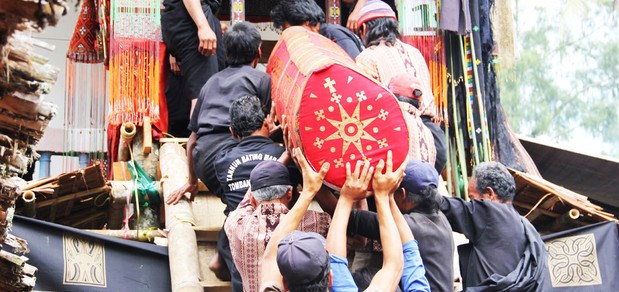
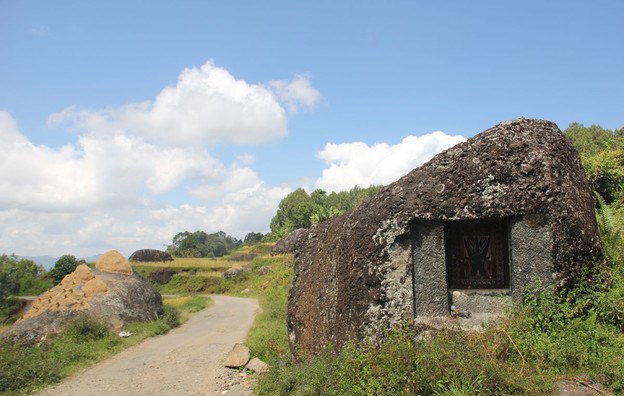
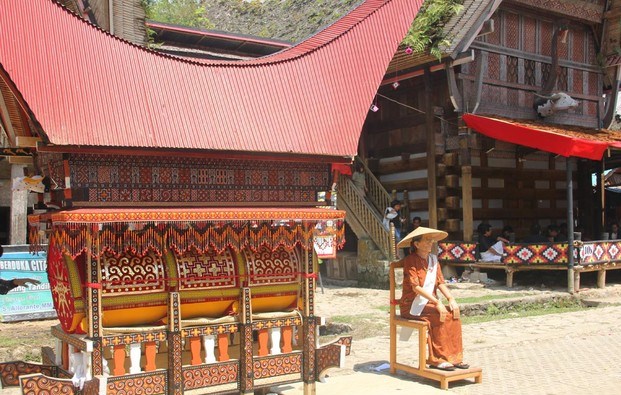
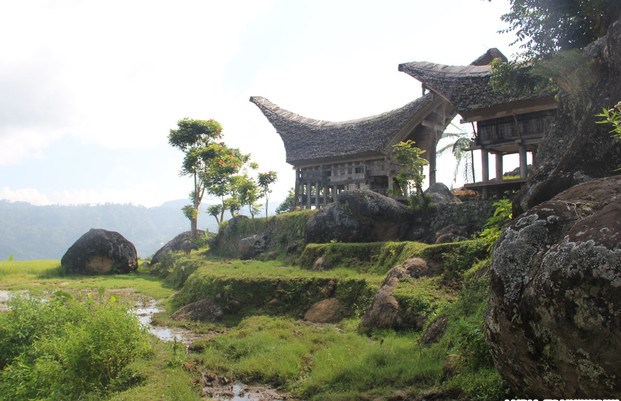
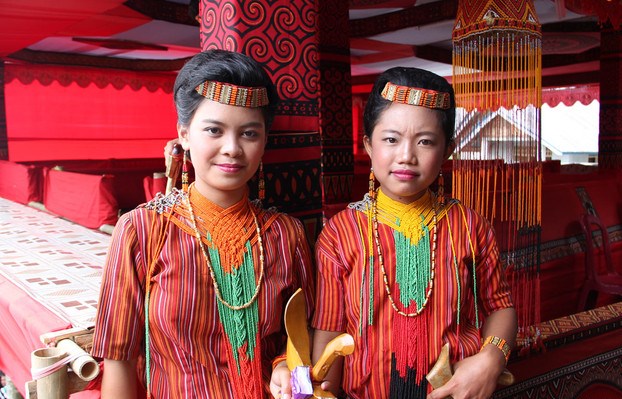
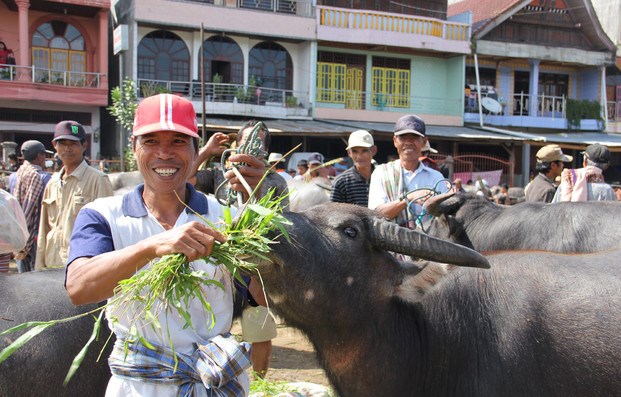

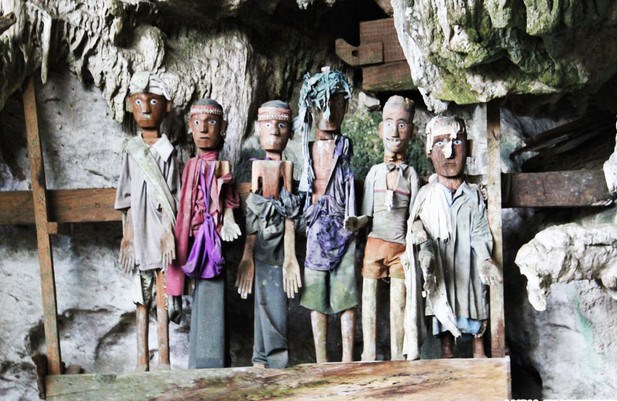

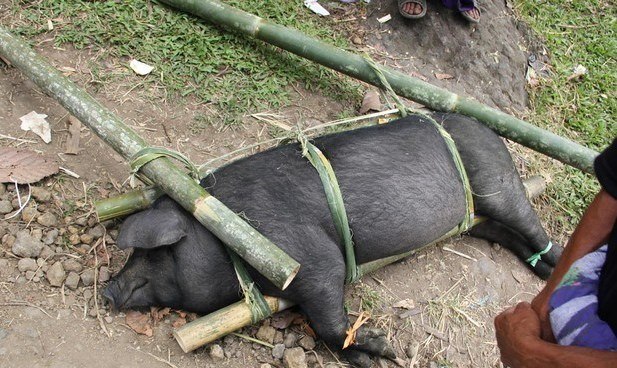
1 Comment
Quiet interesting